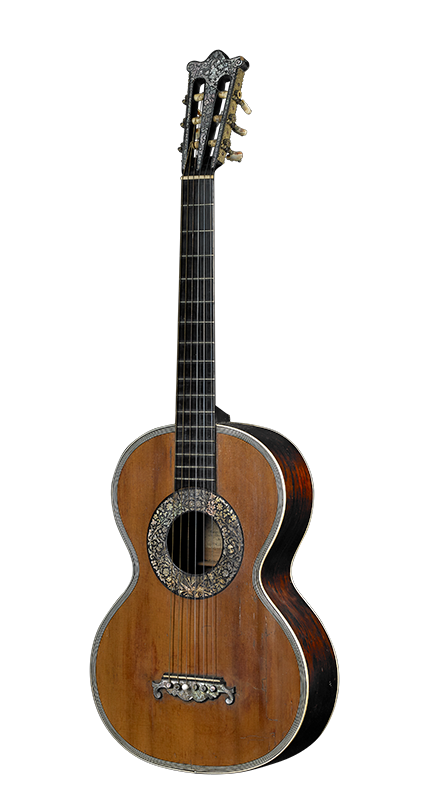
Cousins Richard and William Davis opened their luthier workshop in 1822 on Coventry Street in London’s West End. Their quaint storefront, with double bow-fronted windows and the royal coat-of-arms over the door, was very different from the building that stands there today with its assorted curio shops catering to tourists. Their elaborate guitar labels depicting […]

Census records show that Charles Bruno was born in Saxony in 1806, and as a young man, followed the historic wave of German immigration to America during the second quarter of the nineteenth century.
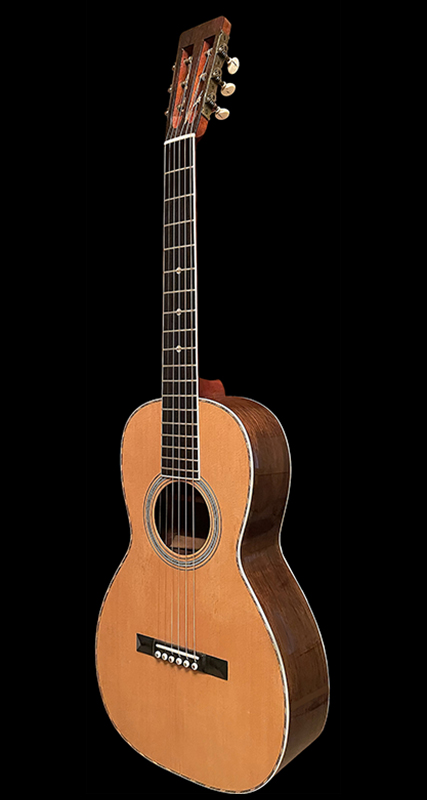
Born Christian Friederich Martin on January 31st, 1796 in Neukirchen, Saxony, C. F. Martin, was the iconic founder of America’s greatest guitar-making dynasty. His father Johann Georg Martin was a cabinet maker who also crafted guitars. The young Martin carried on the family tradition, working in the workshop of the renowned Viennese guitar maker Johann […]

William Tilton was an American inventor and luthier who began manufacturing instruments in New York in 1853. Tilton made new guitars and retrofitted others with his patented improvements. These included his signature metal tailpiece to relieve the tension of the strings upon the soundboard and allow for lighter bracing.
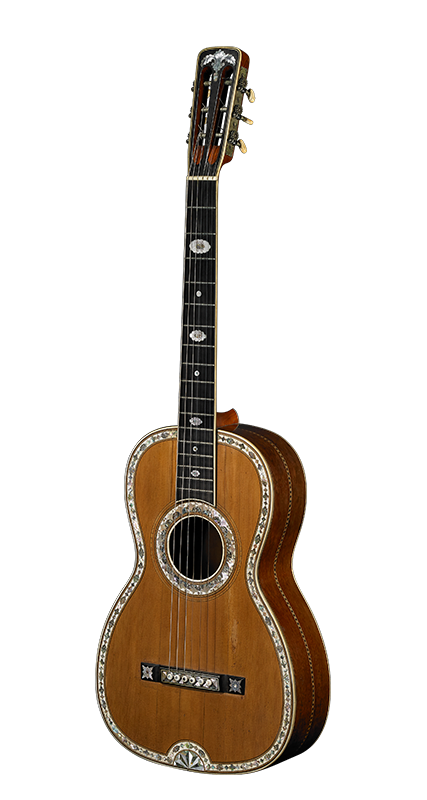
Saxony was a major hub for the manufacture and export of musical instruments during the nineteenth century. The region was a treasure trove of natural resources, especially for the tone woods used in the luthier trade. The Klemm family of Markneukirchen established outlets in America, likely to disintermediate the supply chain, and sell German-made instruments […]
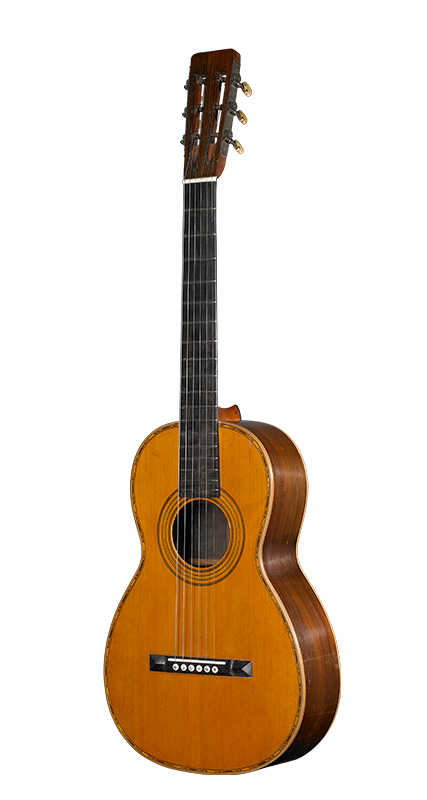
Louis Schmidt, along with Henry Schatz, worked with C. F. Martin in his workshop on the Lower West Side of Manhattan soon after Martin arrived from Germany in late 1833; and while there is no evidence to suggest that George Maul worked in Martin’s shop, he may have been contracted by Martin as his name […]

James Ashborn (c. 1816–1876) arrived in America from England in the late 1830s. Ashborn’s story is as much about the democratization of musical instrument ownership through mass production, as it is about guitar making.
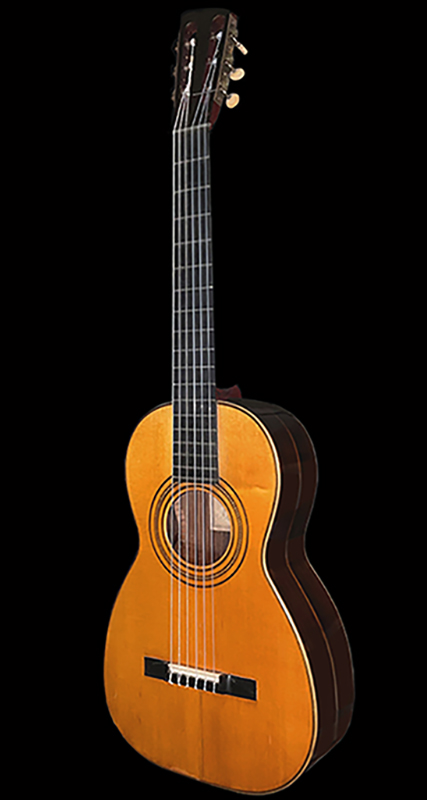
Born Jean Babtiste Coupa in 1808, John Coupa was a guitarist and teacher working in Boston during the 1830s. He advertised as a professor of the “Spanish Guitar” and “French and Italian languages.” A concert program from March 25, 1830, lists him playing a guitar solo between a vocalist accompanied on piano and a work […]
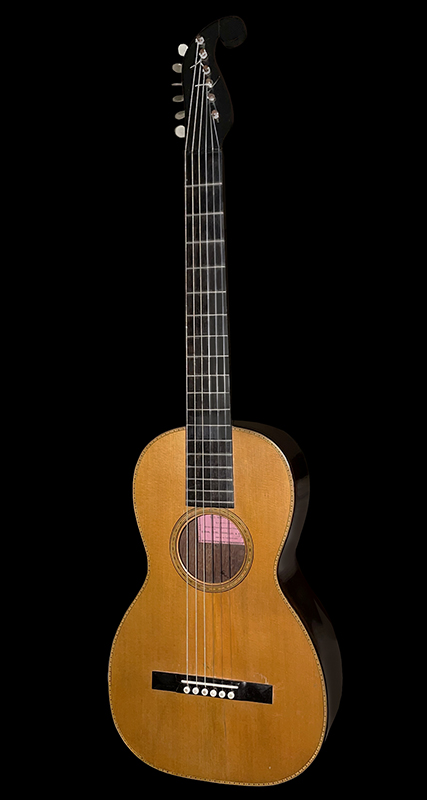
Christian Friedrich Martin (1796–1873) and Heinrich Schatz (c. 1802–1867; later anglicized to “Henry”) began their careers as carpenters in Neukirchen, Saxony (now part of Germany). Both Martin and Schatz were employed in Vienna at the workshop of legendary luthier Johann Georg Stauffer in the early 1820s. While no evidence has emerged to confirm that either […]
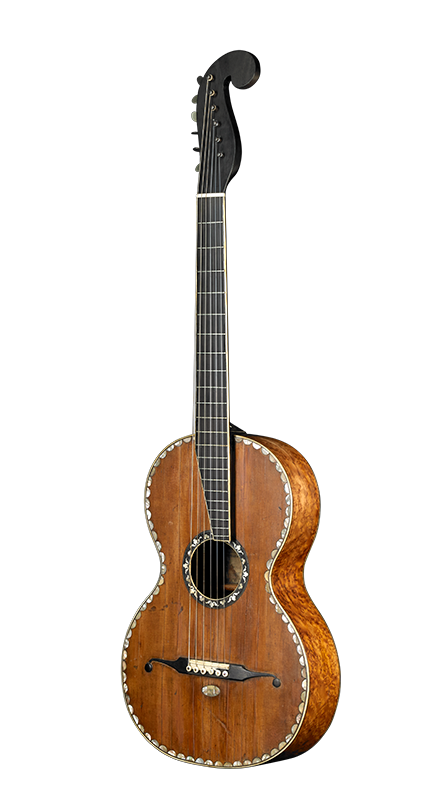
The name Martin is synonymous with American guitar making. The popularity and collectability of Martin guitars are well known, but many devotees might be surprised to learn that C. F. Martin & Co. traces its roots back to the first half of the nineteenth century and has since been run by six generations of Martin […]
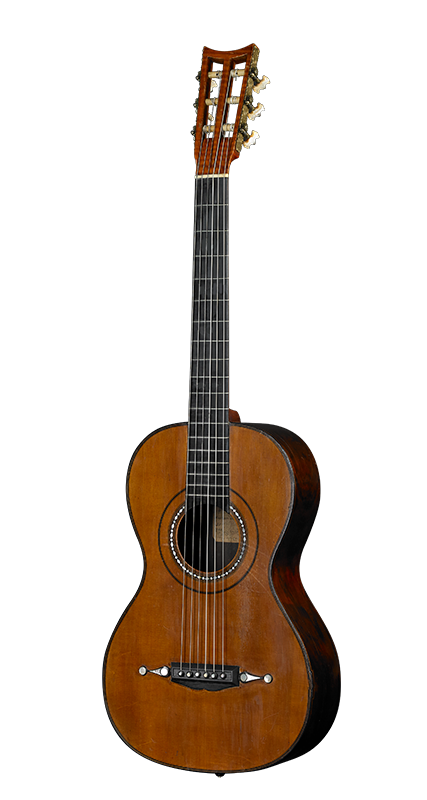
Louis Panormo’s career as Britain’s premier guitar luthier of the nineteenth century spanned nearly five decades. The 1849 Panormo in the Austin-Marie Collection is an example of his later work. The label carries the appellative, “The Only Maker of Guitars in the Spanish Style,” which had graced Panormo’s labels since 1828, the year after the […]
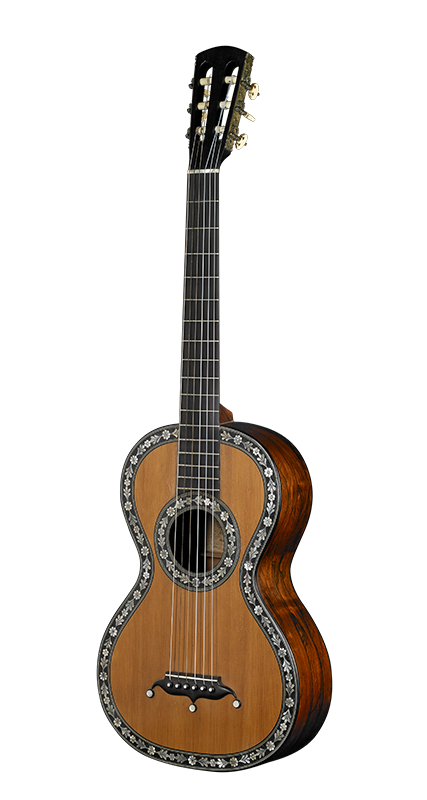
The brothers Dominique (1798–?) and Arnould (c. 1804–?) Roudhloff traveled to London in the 1830s from Mirecourt in Northeastern France. London trade directories show that by 1839, the Roudhloffs were working at 81 Charlotte Street in the Marylebone district, and later moved to number 87 sometime during 1848. The Roudhloffs soon became Panormo’s biggest rival […]
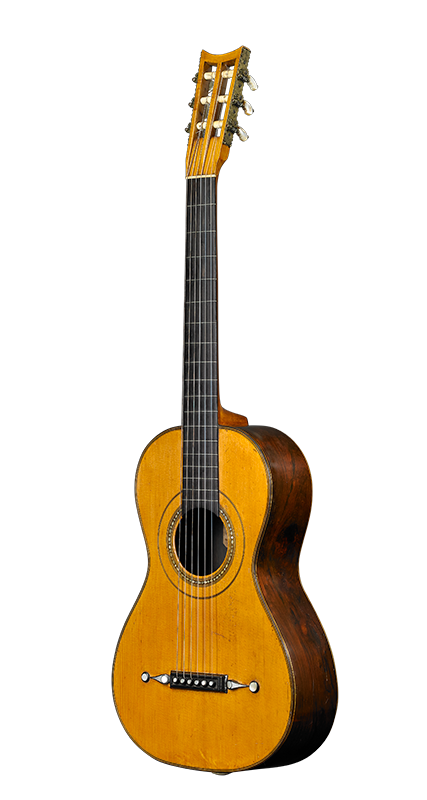
At the turn of the nineteenth century, a new instrument began to overtake the English guittar (a cittern-shaped instrument) in popularity: what the English called – and still call – the “Spanish guitar,” with six single strings. This led to the emergence of a new school of guitar making, almost exclusively based in London, and […]

Joseph Gerard (c. 1806–1844) was a favorite maker of the acclaimed British guitar virtuoso, composer, and tutor Catharina Josepha Pelzer (1824-1895), later known through marriage as Madame Sidney Pratten. Gerard likely arrived in London after 1830 to build guitars in the R. & W. Davis workshop (please see the R.&.W Davis guitar attributed to Gerard […]

Cousins Richard and William Davis opened their luthier workshop in 1822 on Coventry Street in London’s West End. Their quaint storefront, with double bow-fronted windows and the royal coat-of-arms over the door, was very different from the building that stands there today with its assorted curio shops catering to tourists. Their elaborate guitar labels depicting […]
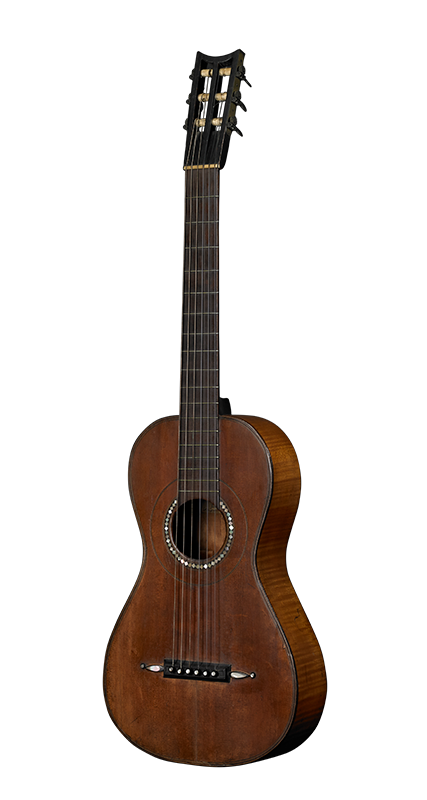
Louis Panormo was England’s most influential guitar maker during the first half of the nineteenth century. Panormo’s first known guitar, the 1816 in the Austin-Marie Collection, stands alone as the only verifiable example of his work until 1822. From that year, only four guitars are known to have survived: two in private collections, one in […]
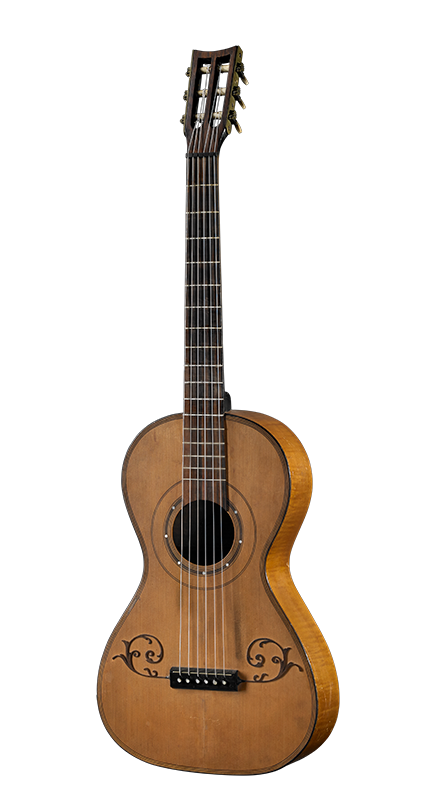
Thomas Preston was the son of the famous eighteenth-century London-based “guittar” maker John Preston (1727–1798). The guittar (sometimes referred to as the “English” guittar) was a plucked string instrument, similar in shape to a sixteenth-century cittern. Strung with wire, its six courses were tuned to an open-C chord and used extensively for accompanying the voice. […]
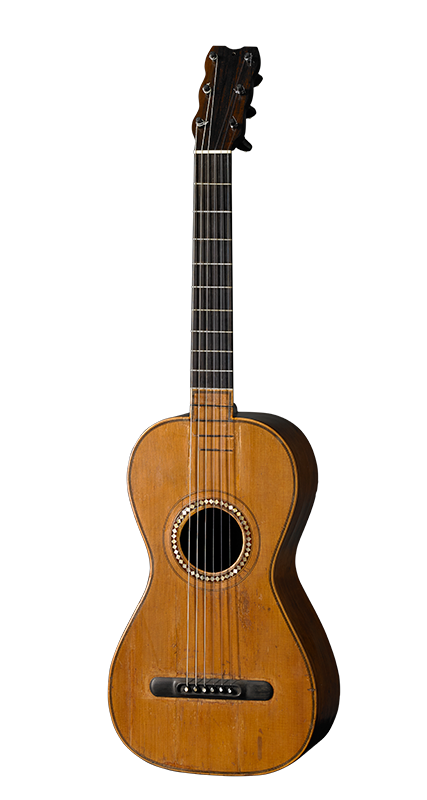
At the turn of the nineteenth century, a new instrument began to overtake the cittern-like English guittar in popularity: what the English called (and still call) the “Spanish guitar,” with six single strings. This led to the emergence of a new school of guitar making, almost exclusively based in London, and arguably representing the most […]

James Longman opened his music shop in 1767 not far from St. Paul’s Cathedral in Cheapside, a bustling business destination in London during the latter half of the eighteenth century. Longman was a seller of printed music and a full line of musical instruments including violins, woodwinds, and keyboards. He later joined with Francis Broderip […]
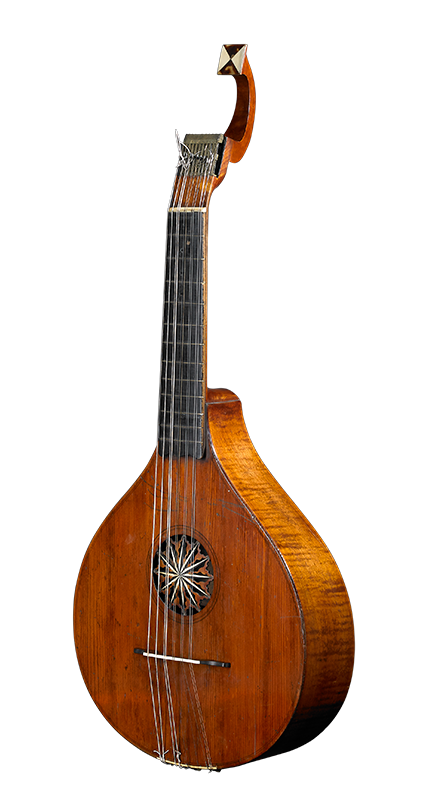
The history of the guitar in England is detailed in a fascinating set of books by Christopher Page, who traces the guitar’s lineage through the chronology of Royal dynasties. The Guitar in Tudor England tells the story of the four-course Renaissance guitar as it was played by everyone from the nobility down to fashionable young […]

Johann Georg Stauffer had three sons: Franz, Johann Anton, and Alois. His second son, Johann Anton (1805–1871), pursued a career as a pianist in his youth, but began working for his father building guitars in 1826. He took over the family business in 1833, although Georg continued to make guitars well into the 1840s.
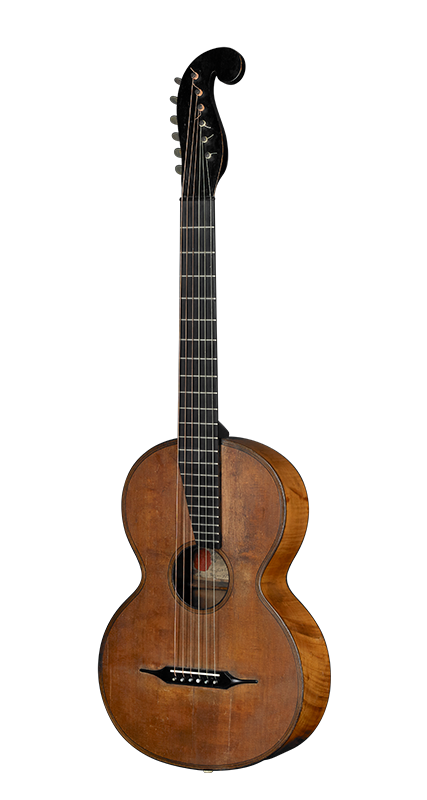
Johann Georg Stauffer (1778–1853) of Vienna, stands alongside his contemporaries, Pierre René Lacote of Paris and Louis Panormo of London, as one of the greatest luthiers of the first half of the nineteenth century. He built violins, violas, cellos, invented the arpeggione (immortalized by Schubert), and produced some of the finest guitars of his time. […]
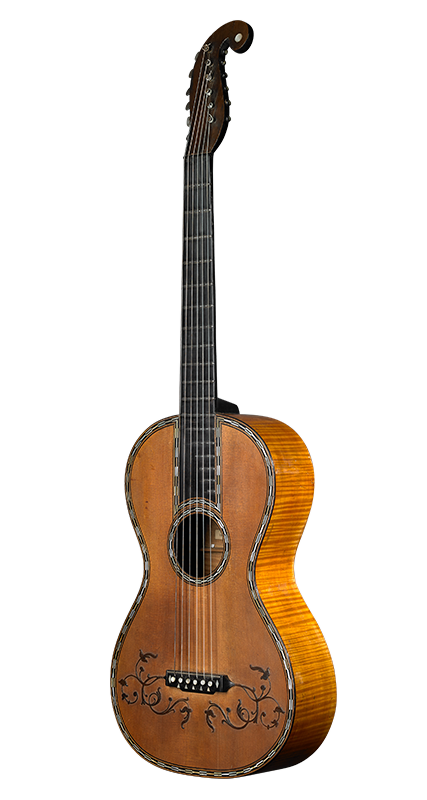
Joseph Mathias Neüner III (1762–1830) of Mittenwald was part of the Neüner dynasty, which traced its roots back to the seventeenth-century luthier, Mathias Neüner I.
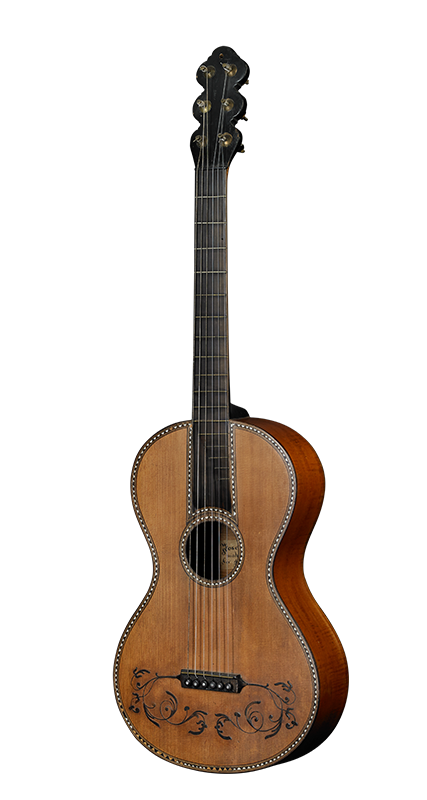
Joseph Rieger (1776–1830) was the son of the violin maker Anton Rieger of Mittenwald. During the nineteenth century, Mittenwald was Germany’s second largest violin making center after Markneukirchen. Originally a Bavarian outpost that was quite literally mitten im Wald, “in the middle of the woods,” the town was located along the trading routes from Augsburg […]
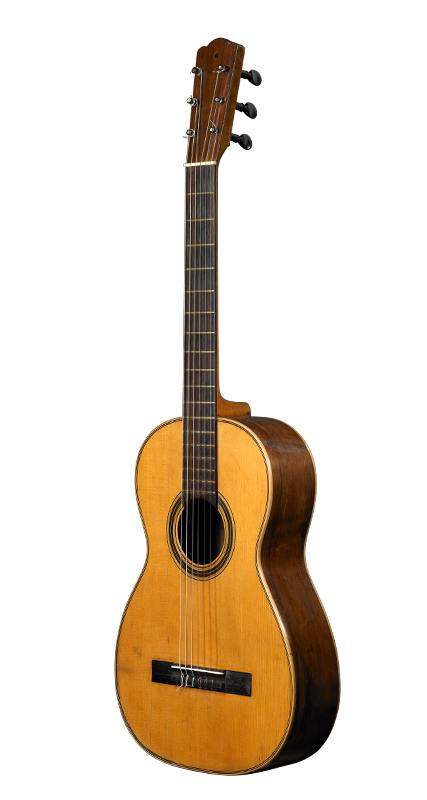
Establishing Madrid as an important center of Spanish guitar making in the early nineteenth century is difficult due to the prominence of the Cadiz luthiers; but by the middle of the century, Francisco Gonzalez founded the Madrid School, which later gave rise to the Ramírez dynasty. Another prominent luthier working in the capital, but only […]

Antonio de Lorca García (c. 1798–1870) of Málaga was the patriarch of one of the most influential families of guitar makers in nineteenth-century Spain. He employed at least four journeymen during his career and apprenticed his only son, Antonio de Lorca Pino, who later achieved success as a luthier and distinguished player. His grandson, Antonio […]
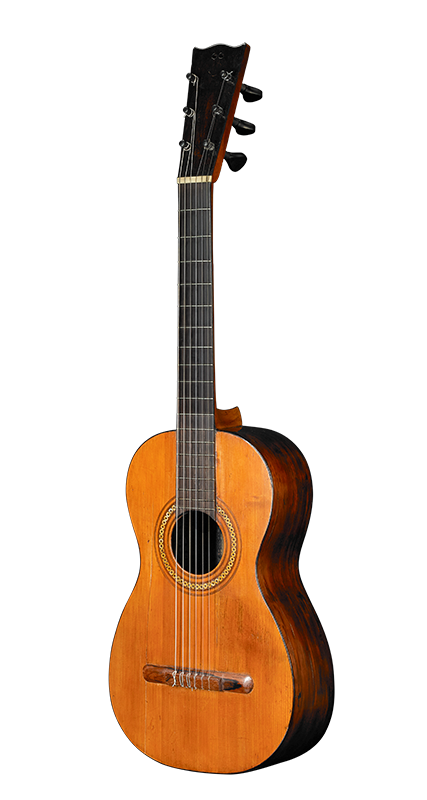
Little is known about Manuel Gutiérrez Martínez of Sevilla (c. 1773–1857) and his work; his father was a silversmith, but we have no knowledge of where, or from whom, he learned his craft. The most famous violero working in Sevilla in the eighteenth century was Francisco Sanguino, but their incoincident dates meant that Gutiérrez and […]

Joséf Pagés (c. 1762–c. 1822) was the son of one of the most famous of all six-course guitar makers, Juan Pagés of Cádiz. Joséf had three younger brothers (Antonio, Francisco, and Joaquín) who after working as journeymen for Juan, also made guitars under their own labels. Yet none were so prolific as Joséf and his […]
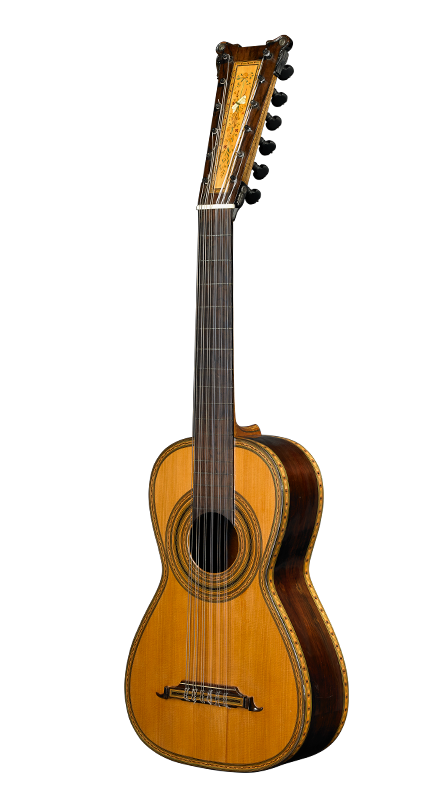
The Cádiz school of guitar makers, which included Pagés, Benedid, Pérez, Sanguino, and Martínez – all originating from the region of Andalucia in southern Spain – was well known for its guitar production in the late eighteenth and early nineteenth centuries. To the north, luthiers in Madrid were producing guitars too, but with a uniquely […]
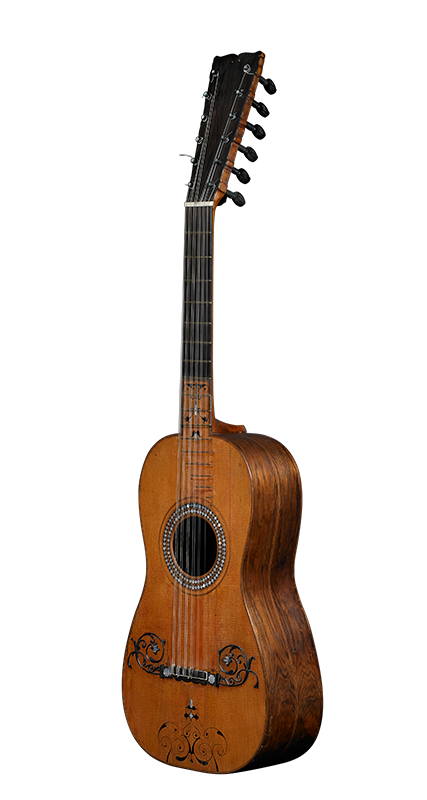
Manuel Martínez was born in Málaga in or around 1774 and became a master guitar maker in 1806. Manuel was cited among the luthiers preferred by the Spanish virtuoso and composer Fernando Sor in his Méthode pour la Guitare.
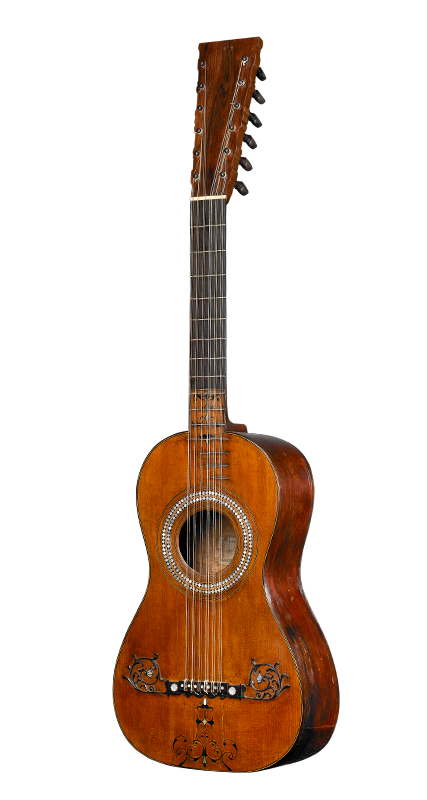
Juan Pagés (1741–1821) was one of the founding members of the Cádiz School of guitar makers and the father of four sons who built guitars under their own label, including the famed Joséf Pagés (c. 1760–c. 1822). Pagés guitars were highly regarded and mentioned favorably by guitar virtuosos Fernando Sor and Dionisio Aguado.
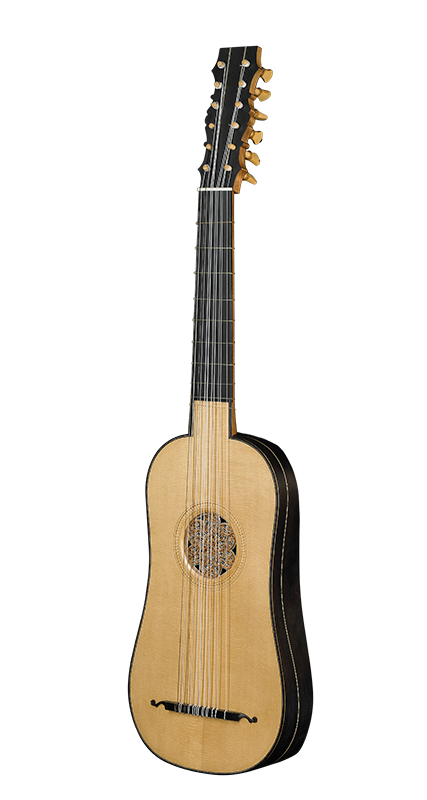
Sixteenth-century Spain was the cultural center for the music making of the vihuelistas, players of the vihuela da mano – a guitar-shaped instrument strung with five to six courses. It is believed that the vihuela was adopted by Christian Spain because the other popular plucked instrument of the day, the lute, was too similar in […]
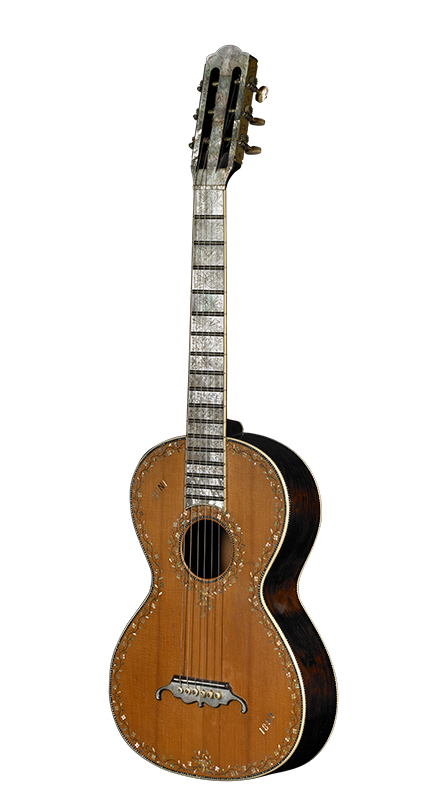
Jérôme Thibouville-Lamy & Co. was Mirecourt’s largest manufacturer of musical instruments during the nineteenth century. The 1892 J.T.L. guitar in the Austin-Marie Collection is an example of the firm’s most ornate and expensive model. Although the guitar carries no maker’s label, the dealer’s label from Biarritz, France is visible through the sound hole.
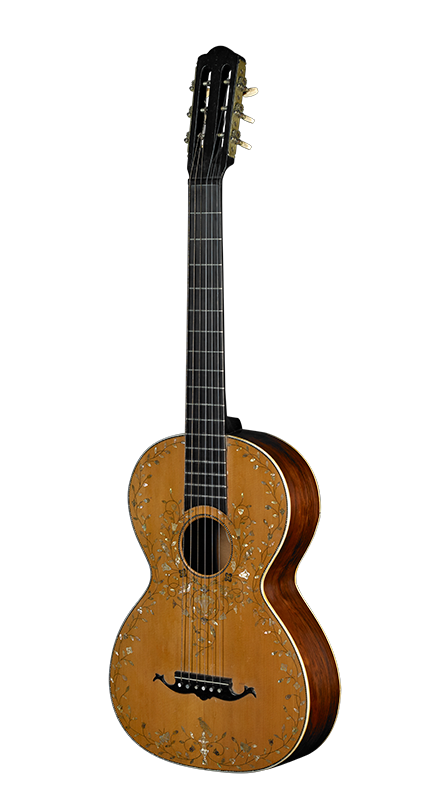
The town of Mirecourt is situated in the Vosges area of northeastern France near the borders of Luxembourg, Switzerland, and Germany. At the beginning of the nineteenth century, Mirecourt came into its musical instrument making heyday, consisting mainly of small family-run workshops employing highly skilled craftsmen.
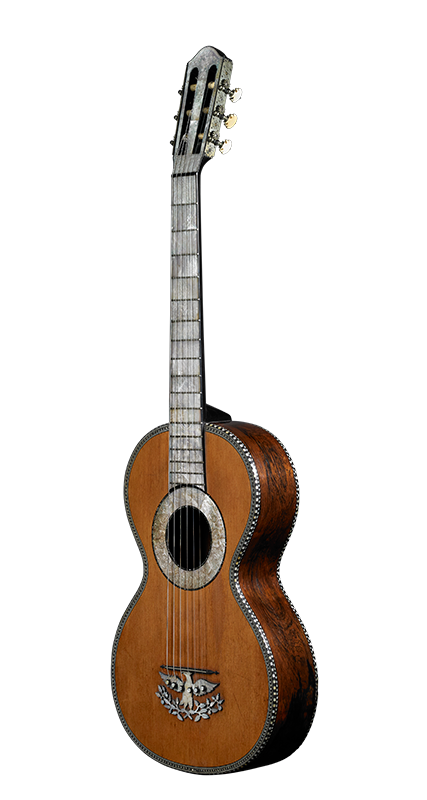
The town of Mirecourt in northeastern France holds an unparalleled position in the history of guitar manufacture. What began in the early eighteenth century as a small collective of musical instrument-making families working in concert with distributors, specialty artisans, and often with each other, grew into the largest center of guitar production in France. Mirecourt’s […]
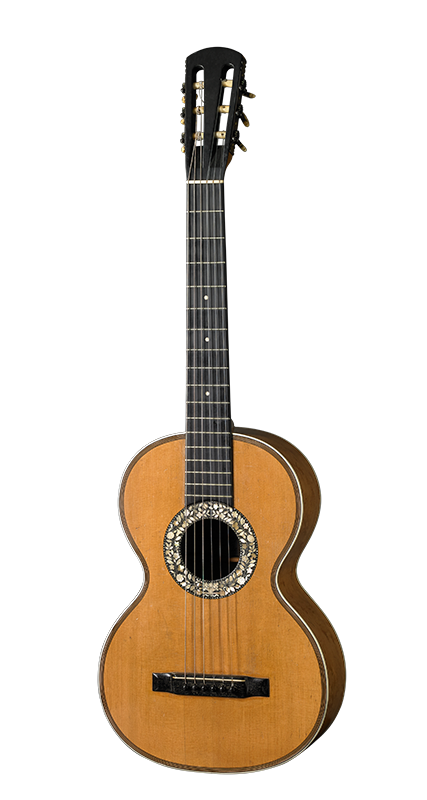
Ferdinand Pelzer, the son of a mathematics professor, was born in 1801 in the ancient city of Treves (Trier) near Germany’s border with Luxembourg. He assisted his father with his teaching duties at the local university, but he was particularly drawn to music; he excelled as a teacher, composer, player of the piano forte, and […]
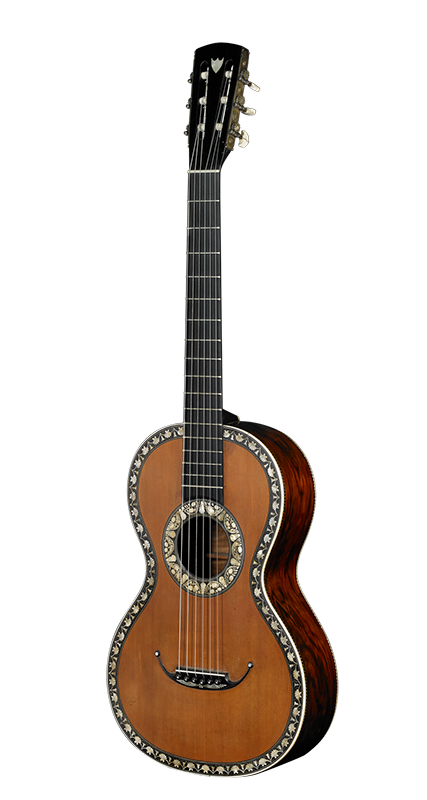
Apprentices who learned the luthier craft in Mirecourt during the nineteenth century were much sought after and would routinely move on to establish their own workshops in other cities, often Paris. Occasionally they would return to Eastern France after several years of success bringing their cultivated skills back to the various Mirecourt ateliers.
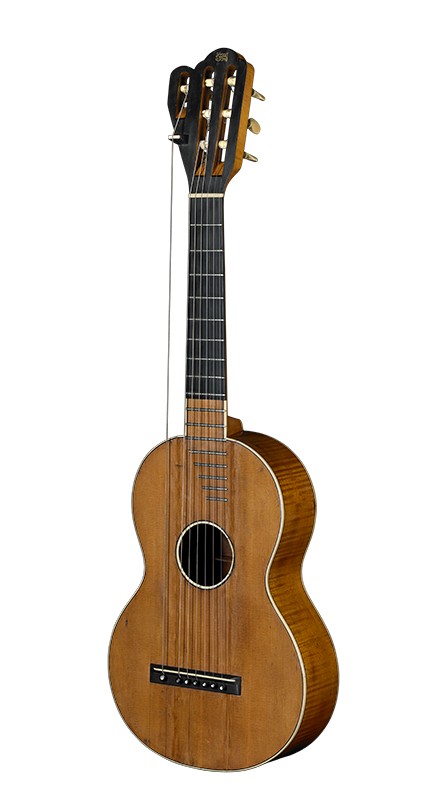
The French guitar virtuoso and composer Napoléon Coste was the inspiration behind Pierre René Lacote’s “Heptachorde,” or seven-string guitar. The seventh string was situated away from the fretboard and was most often tuned to C or D, producing a fuller sound.
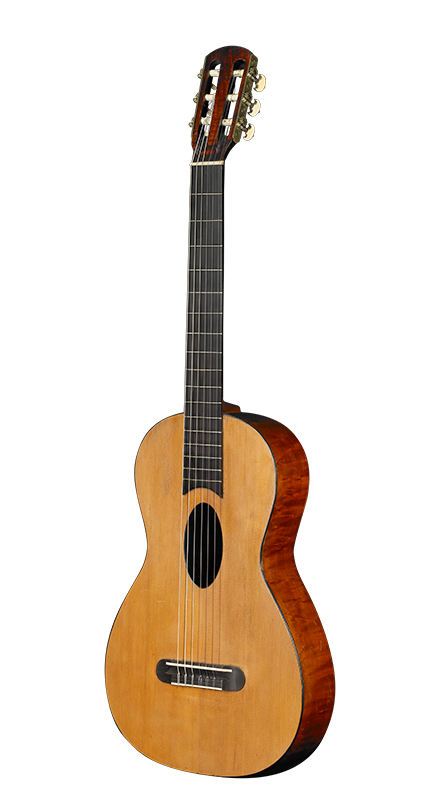
Etienne Laprevotte (c. 1790–1856) occupies a special place in the history of guitar making for the violin-like qualities of his instruments. A successful Parisian builder of fine violins and guitars during the mid-nineteenth century, he was luthier by appointment to the Duke of Bordeaux. Today he is considered a “rare” builder, for few of his […]

Etienne Laprevotte (c. 1790–1856) was a skilled violin maker working in Paris during the first half of the nineteenth century. He is best remembered, however, for his fine guitars with their unconventional oval-shaped sound holes. Laprevotte built his guitars based on the principles of violin design; his maple backs were carved into an arch and […]







































